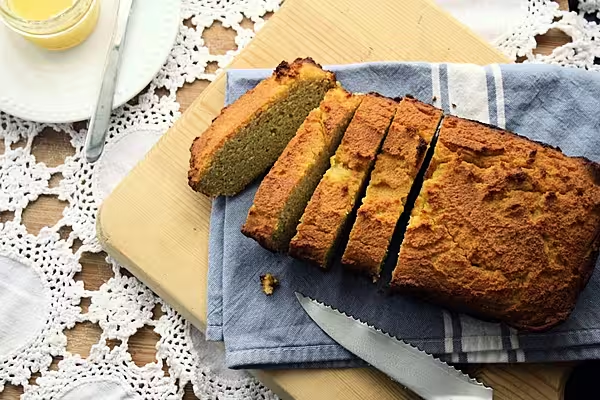Gluten-free is going strong.
Only 1 percent of the U.S. population has been diagnosed with celiac disease, yet gluten-free products are still filling up—and flying off—grocery store shelves. U.S. sales reached $1.57 billion last year, up 11 percent over 2014, according to data from Packaged Facts.
Sure, that growth has slowed—it was at 81 percent in 2013. But it still runs laps around the grocery sector's overall growth of 3 percent. In the cereal aisle, for example, where sales have been declining for the past decade, claims such as "gluten-free," as well as "GMO-free" and "no high-fructose corn syrup" have made for one of the few bright spots, according to a recent Nielsen report.
Wheat-free bread may be old news, but tie-ins with other health trends are keeping the category strong. A paleo dieter would naturally avoid gluten, but now the label on a gluten-free paleo diet bar guarantees it. A wheat-allergy sufferer can not only enjoy fresh pasta but high protein pasta as well.
Avoiding gluten while dining out is also getting easier. Although some restaurants are now celebrating grain, others are touting their gluten-free options. "Gluten-free" was on 23.6 percent of menus this year, beating out "organic" (21 percent), "locally" (14.2 percent), and "all natural" (8.9 percent), according to DataSsential Menu Trends. That's a big jump from 2014, when it was on only 15 percent of menus, and organic was still the health term to beat, appearing on about 19 percent of U.S. menus.
Many consumers are simply avoiding more ingredients, gluten included, a recent Euromonitor survey found. In 2015, 35 percent were avoiding specific ingredients such as added salt, fat, sugar, and gluten. In 2016, that number jumped to 53 percent. Of those, 22.4 percent said they were avoiding gluten, up from 15.2 percent in 2015.
For those diagnosed with celiac disease or a gluten sensitivity, the sudden boom in tasty, sort-of-affordable gluten-free foods is a "blessing," said Alessio Fasano, director of the Center for Celiac Research and Treatment at Massachusetts General Hospital. "Life is much easier," he said. "You don't have to spend hours and hours making your own bread."
But only 15 percent of consumers make these purchases because a member of the household has a gluten sensitivity, and only 9 percent make them for a member with celiac disease, according to Packaged Facts' October 2016 report, "Gluten-Free Foods in the U.S."
The top reason for purchase? Thirty percent responded that "some products that I buy for other reasons are marked gluten-free." Nearly as many—29 percent—said they buy them because "gluten-free products are generally healthier," and 20 percent said they make the purchase to manage their weight. Other surveys confirm these findings. NPD Group found that about one in four consumers thinks "gluten-free is good for everyone."
Health professionals say this is a misconception—people without a related diagnosis don't need to avoid gluten.
"We don't think it's all that healthy a diet," said Peter H.R. Green, director of the Celiac Disease Center at Columbia University and author of Gluten Exposed: The Science Behind the Hype and How to Navigate to a Healthy, Symptom-Free Life.
That's largely because processed food is processed food, gluten-free or not. "The things that make things tasty are salt, sugar, fat, and gluten," Green said. "Take one thing out and they usually add more of the other."
In other words, less gluten can mean more sugar, fat, and salt, the other ingredients people tend to avoid—and with good reason.
Both Green and Fasano point to misguided celebrity endorsements of gluten-free diets as a cause of their popularity. "It's not a lifestyle," Fasano said. "The gluten-free diet is for medical necessity."
For those diagnosed with celiac disease or a wheat sensitivity, Green recommends something much simpler than gluten-free crackers or gluten-free microwavable pizza.
"There's this wonderful gluten-free food," he said, "called fruit and vegetables."
News by Bloomberg, edited by ESM. To subscribe to ESM: The European Supermarket Magazine, click here.














